In the fast-paced world of e-commerce, Direct-to-Consumer (D2C) brands have disrupted traditional business models by forging direct connections with their customers. These innovative companies have harnessed the capabilities of digital marketing, and at the forefront of this digital landscape stands Facebook advertising. With its unparalleled reach, sophisticated targeting options, and diverse ad formats, Facebook has become a driving force behind the success of countless D2C brands, propelling them to the coveted six-figure revenue mark.
The digital marketing realm has evolved significantly over the past decade, and Facebook Ads have remained a constant source of opportunity for businesses of all sizes. D2C brands, in particular, have found Facebook advertising to be a transformative force, enabling them to tap into a vast and engaged audience, irrespective of their industry.
This article explores ten dynamic Facebook Ads strategies that have become the cornerstone of D2C brands’ journey to achieving six figures in revenue. These strategies encompass the art and science of effective campaign setup, the segmentation of audiences into precise ad sets, the importance of pinpoint targeting, the orchestration of multi-stage sales funnels, and the balance between front-end and back-end strategies. Understanding Customer Lifetime Value (LTV) is another pivotal aspect, as it guides D2C brands in crafting campaigns that yield sustainable profits.
Beyond these foundational strategies, the creative elements of Facebook advertising take center stage. Engaging ad creatives, coupled with the ever-powerful allure of video content, are pivotal in capturing the attention and imagination of the audience. Furthermore, systematic split testing, ongoing analysis, and data-driven decision-making remain the pillars of optimization that drive D2C brands towards six-figure success.
As we embark on this exploration of the ten Facebook Ads strategies that propel D2C brands to six figures, we’ll delve into each strategy’s intricacies, dissecting the key components that make them work in synergy. The journey begins with the campaign setup, where the stage is set for what’s to come, and the audience is introduced to the brand.
Each of these strategies represents a stepping stone, guiding D2C brands towards their revenue goals. The path is filled with challenges, lessons, and moments of inspiration as they navigate the complex landscape of digital advertising. While the strategies may vary in approach, the overarching goal remains constant – to harness the power of Facebook Ads to drive revenue and achieve substantial growth.
The success stories of D2C brands that have harnessed these strategies offer valuable insights and proof of concept. From the moment a campaign is launched to the ongoing optimizations and analyses, the journey is marked by milestones of achievement and the pursuit of excellence.
This journey is not limited to a single sector or niche; it spans a multitude of industries, from fashion and beauty to technology and beyond. Regardless of the industry, D2C brands have discovered that Facebook advertising provides a level playing field and the opportunity to thrive.
The future of digital marketing and Facebook advertising for D2C brands is an exciting and ever-evolving landscape. It’s one where innovative strategies, compelling content, and data-driven decisions will continue to shape the trajectory of these brands. By mastering the ten strategies discussed in this article, D2C brands can position themselves for success in a competitive marketplace and work towards the coveted milestone of achieving six figures in revenue.
As we embark on this journey through the world of Facebook Ads, D2C brands have an opportunity to gain new perspectives, refine their existing strategies, and draw inspiration from the success stories that attest to the potential of this dynamic advertising platform. Let’s dive into the strategies that are driving the growth and revenue of D2C brands, and uncover the secrets behind their path to six-figure success. These strategies encompass ad campaign setup, ad sets, precise targeting, sales funnels, both front-end and back-end approaches, understanding customer Lifetime Value (LTV), and the importance of compelling ad creatives and video content.
- Laser-Focused Ad Campaign Setup
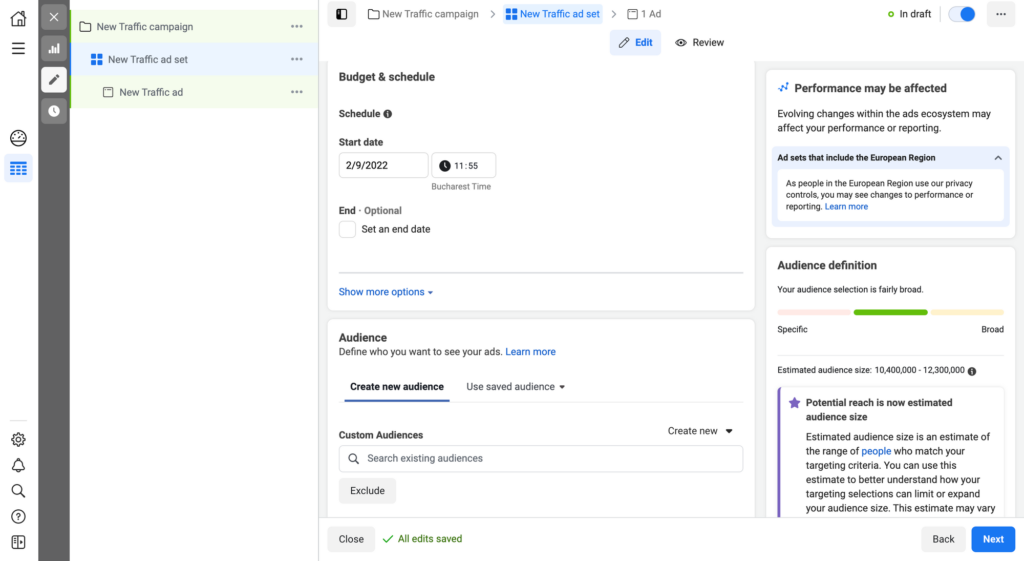
In the ever-evolving landscape of digital advertising, Facebook stands as a colossal platform, offering businesses a channel to connect with their audience on a global scale. Direct-to-Consumer (D2C) brands, in particular, have recognized the immense potential for growth through Facebook advertising, a journey that commences with the essential art of laser-focused ad campaign setup. At the heart of this journey lies the critical element of setting up a Facebook ad campaign with precision, serving as the foundational stone upon which success is built.
Successful Facebook advertising campaigns aren’t mere products of chance; they are meticulously crafted through precise setup. This entails a series of pivotal steps that collectively mold the campaign’s direction. For D2C brands with ambitious aspirations of achieving six figures in revenue, nailing this step from the outset is nothing short of essential.
Selecting Your Objective: Charting Your Course

The first cornerstone in the setup process is selecting your campaign objective. This choice dictates the purpose and outcome of your campaign. Whether it’s driving website traffic, generating leads, promoting app installations, or encouraging purchases, each objective serves a specific purpose. It’s akin to charting your course on a digital map, guiding your audience towards the desired destination.
Defining Your Target Audience: The Precision Approach

One of Facebook advertising‘s key strengths is its advanced targeting capabilities. D2C brands must harness these capabilities by defining a target audience with precision. Demographics, interests, behaviors, and custom audiences are the building blocks for audience segmentation. By understanding your ideal customer and tailoring your campaign to reach them, you optimize your chances of success.
Setting Your Budget: The Financial Blueprint
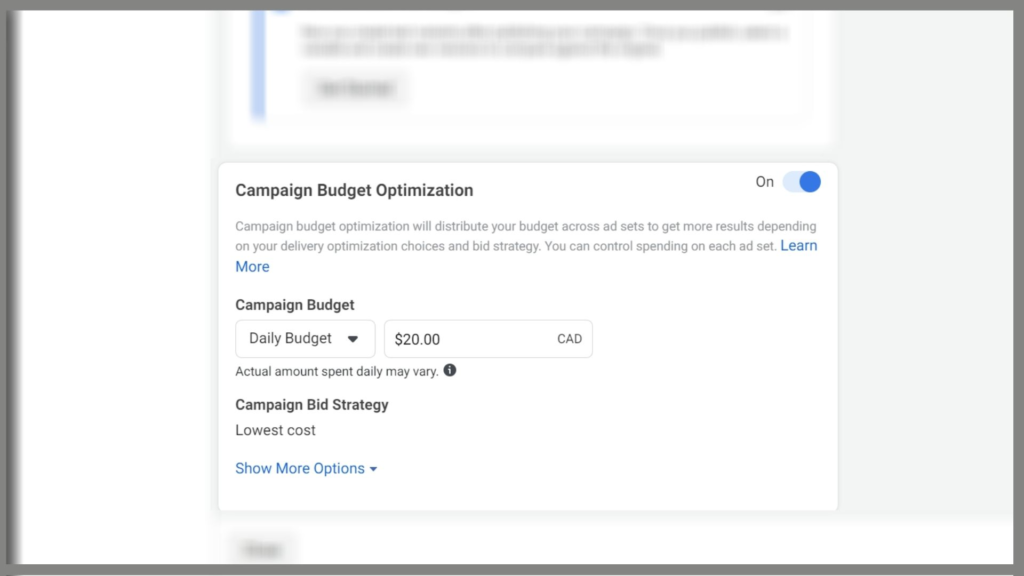
Budget allocation is the financial blueprint of your Facebook ad campaign. It outlines the financial resources you are willing to invest and guides your financial discipline. Allocating an appropriate budget, considering the objectives and potential return on investment, is crucial. Six-figure success isn’t solely about how much you spend, but how you spend it.
Crafting Compelling Ad Creatives: The Art of Persuasion

While the structural components of a campaign are pivotal, ad creatives add the artistic touch that captures your audience’s attention. High-quality images, persuasive ad copy, and an engaging call to action are the elements that compel users to take action. Crafting ad creatives that not only align with your campaign objective but also resonate with your audience’s needs and desires is a fine art.
For D2C brands aiming to reach six figures in revenue, every ad creative must be more than just an image or text; it must be a persuasive piece of content that resonates with the viewer.
The Precise Art of Foundation Building
In the world of digital advertising, the success of your Facebook ad campaign hinges on precision. The ad campaign setup process is the pillar upon which the entire structure rests. It’s where you define your goals, identify your audience, allocate resources, and craft compelling ad creatives.
For D2C brands embarking on the journey towards six-figure success, getting the campaign setup right from the start is non-negotiable. It sets the tone for what’s to come, and it’s the first impression you make on your potential customers.
In the vast sea of Facebook advertising, D2C brands that master the art of laser-focused ad campaign setup are those that stand out. They understand that every choice they make in this process is a strategic decision that shapes the path to success. By selecting the right objective, defining their target audience with precision, setting a well-considered budget, and crafting ad creatives that resonate, they lay the foundation for a campaign that has the potential to achieve six figures in revenue.
2. Strategic Ad Set Configuration: Tailoring Your Facebook Ads for Success

In the realm of Facebook advertising, the approach you adopt can make or break the success of your campaign. Instead of relying on a single, broad ad set, smart advertisers understand the value of creating multiple ad sets, each designed with a specific objective in mind. This nuanced strategy allows for the precise tailoring of ads to meet the unique needs and behaviors of your audience. In this article, we explore the concept of ad sets for specific goals and why they are a game-changer in the quest for advertising success.
Diversity in Objectives
In the dynamic landscape of Facebook advertising, not all goals are equal. The objective you aim to achieve may differ from one campaign to another. For instance, one campaign might focus on lead generation, aiming to capture valuable contact information from potential customers. Another campaign may prioritize direct sales, emphasizing immediate conversions and revenue generation. A third campaign could center on retargeting, re-engaging users who have previously interacted with your brand. Each of these objectives requires a distinct approach, and this is where the power of ad sets for specific goals comes into play.
The Single Ad Set Conundrum
Many advertisers fall into the trap of using a single, broad ad set for their campaigns. While this approach may offer simplicity and convenience, it often results in less effective campaigns. The reason? A single ad set may lack the specificity required to address the varying needs and behaviors of your audience. A one-size-fits-all approach can miss the mark, causing your ads to fall short of their potential.
The Multi-Ad Set Advantage
Creating multiple ad sets tailored to specific goals provides a host of advantages that can significantly impact the success of your Facebook advertising campaigns:
Audience Segmentation: Different ad sets can be designed to target specific segments of your audience. This segmentation allows for the delivery of highly relevant content to users based on their behavior and interaction with your brand.
Ad Creative Customization: Each ad set can feature ad creatives specifically tailored to resonate with the selected audience segment. This customization ensures that the content speaks directly to the users’ interests and needs.
Budget Allocation: Allocating your budget strategically becomes more straightforward with ad sets for specific goals. You can assign different budgets to each ad set based on the importance of achieving each objective.
Performance Monitoring: Tracking the performance of each ad set is more precise, as it allows you to assess the success of individual goals. This detailed performance monitoring enables real-time adjustments and optimizations.
A/B Testing: Ad sets designed for specific goals enable A/B testing with ease. You can experiment with various strategies within each ad set, optimizing for the best results.
The Power of Personalization
Personalization is a key driver in the success of modern advertising. Ad sets for specific goals provide a level of personalization that is otherwise unattainable with a single ad set. When users feel that an ad speaks directly to their needs and desires, they are more likely to engage and convert. By catering to the varying objectives of your campaigns, you are positioning your brand for greater resonance with your audience.
3. Pinpoint Targeting
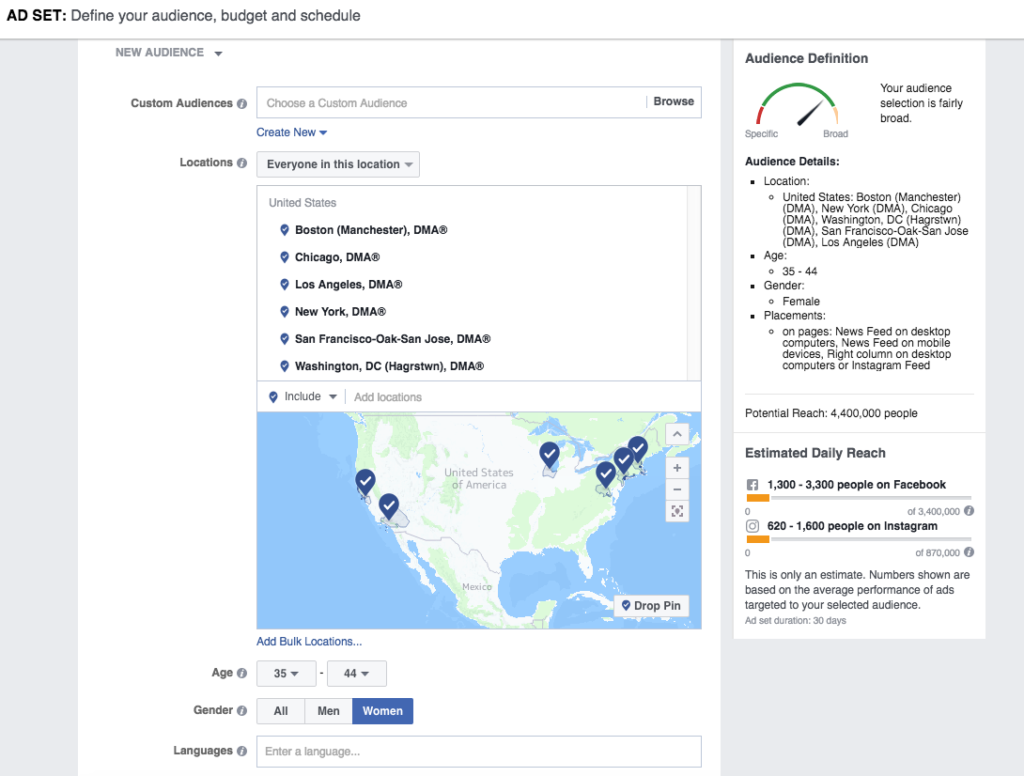
At the core of Facebook advertising’s effectiveness is the art of pinpoint targeting. This strategic approach involves tailoring your ad delivery to specific segments of the platform’s vast user base. By focusing on users who are most likely to engage with your content, you not only optimize your ad spend but also increase the chances of achieving your campaign’s objectives.
Demographics: The Basics
Demographic targeting is the foundation of pinpoint targeting. This encompasses user data such as age, gender, location, language, and relationship status. Understanding the demographics of your ideal customer is the first step in narrowing down your audience to those most likely to convert.
Interests: Unveiling Passions and Preferences
One of Facebook’s strengths is its ability to tap into user interests. Advertisers can target individuals based on their hobbies, passions, and preferences. This method ensures that your ads are displayed to users who align with the subject matter of your content.
Behaviors: User Actions and Intent
Behavioral targeting is a powerful tool that lets advertisers reach users based on their actions and intent. This includes data on past purchases, device usage, travel behavior, and more. It enables advertisers to target individuals who exhibit specific behaviors relevant to their product or service.
Custom Audiences: Tailored Precision
Creating custom audiences is where pinpoint targeting reaches its zenith. Custom audiences are composed of users who have interacted with your brand, either through your website, app, or other touchpoints. By targeting this warm audience, you can effectively nurture leads and encourage conversions.
The Pinpoint Targeting Advantage
The benefits of pinpoint targeting are manifold:
Relevance: Pinpoint targeting ensures that your ads are relevant to the audience you’re addressing. This relevance significantly boosts engagement and conversion rates.
Cost Efficiency: By reaching users who are more likely to convert, you optimize your ad spend, reducing the cost per acquisition.
Higher ROI: The result of relevance and cost efficiency is a higher return on investment (ROI) for your advertising campaigns.
Personalization: Pinpoint targeting allows for personalized ad content, making your audience feel valued and understood.
Performance Tracking: With pinpoint targeting, tracking and analyzing the performance of your ads becomes more precise. This data-driven approach enables real-time optimizations for improved results.
4. Crafting Multi-Stage Sales Funnels

Six-figure success often comes from a well-structured sales funnel. Begin with awareness ads to introduce your brand, move to consideration ads to highlight your product’s benefits, and conclude with conversion ads to seal the deal. This multi-stage approach guides potential customers through the buyer’s journey.
- Front-End & Back-End Strategies
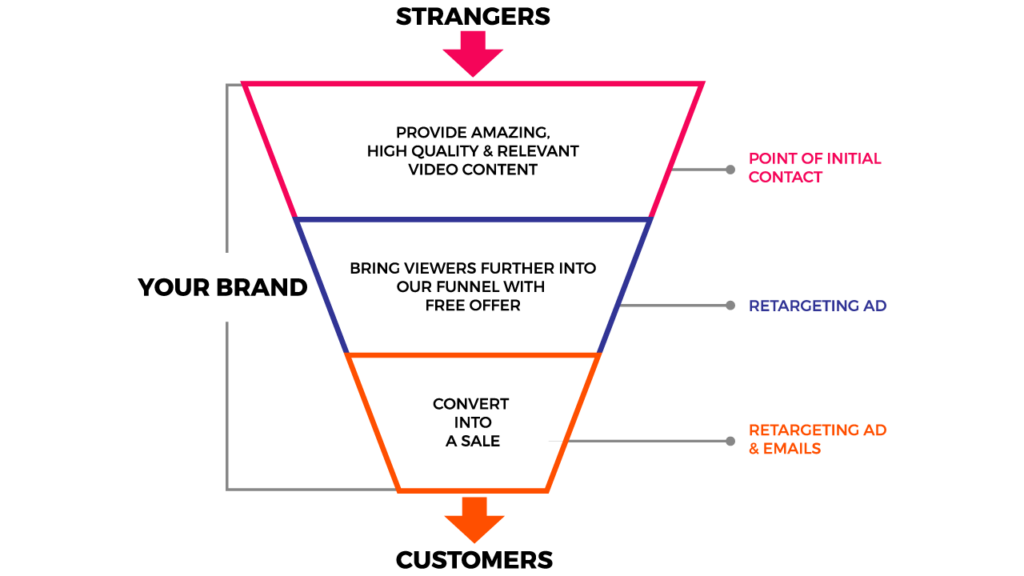
While front-end strategies focus on initial sales, back-end strategies are equally critical for long-term profitability. Implement post-purchase upsells, cross-sells, and loyalty programs to maximize customer lifetime value. These strategies are the key to achieving six figures and beyond.
6. Understanding Customer Lifetime Value (LTV)

A deep understanding of customer LTV is essential for D2C brands looking to achieve six figures in revenue. LTV reflects the long-term value of a customer, enabling you to allocate your ad spend more effectively and justify higher acquisition costs.
7. Engaging Ad Creatives

Compelling ad creatives are the heart of any successful Facebook ad campaign. Use high-quality images and persuasive ad copy to captivate your audience’s attention. A/B testing can help identify the most effective ad creatives.
8. Embrace Video Content
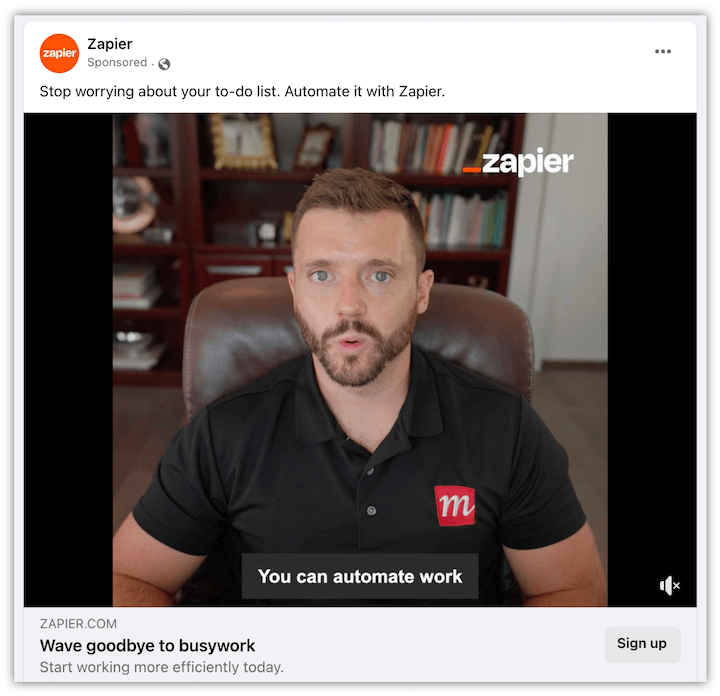
Incorporating video into your Facebook ad strategy is a game-changer. Video ads tend to have higher engagement rates and are more likely to go viral. Use videos to showcase your product in action, share customer testimonials, and tell your brand’s story.
9. Split Testing for Optimization
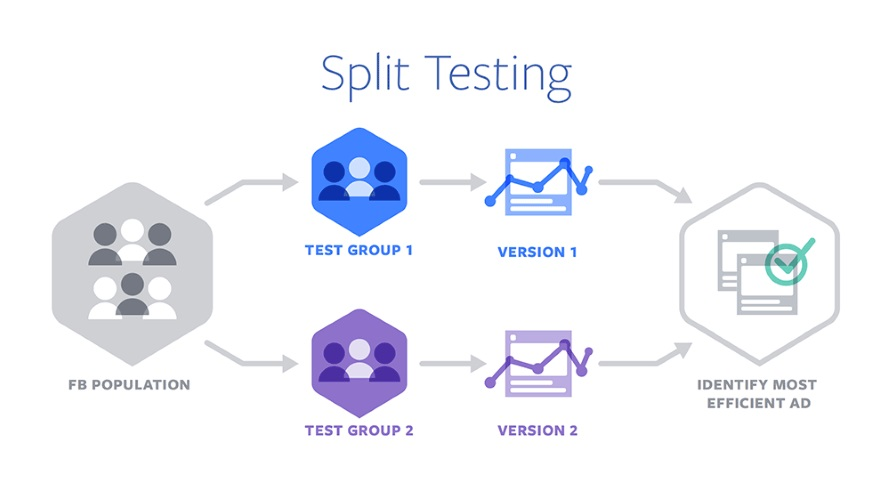
Continual split testing is crucial for refining your Facebook ad strategy. Test different ad copies, images, headlines, and calls to action to identify the most effective combinations. This optimization process is vital for scaling your campaigns to six figures and beyond.
10. Regular Monitoring and Analysis
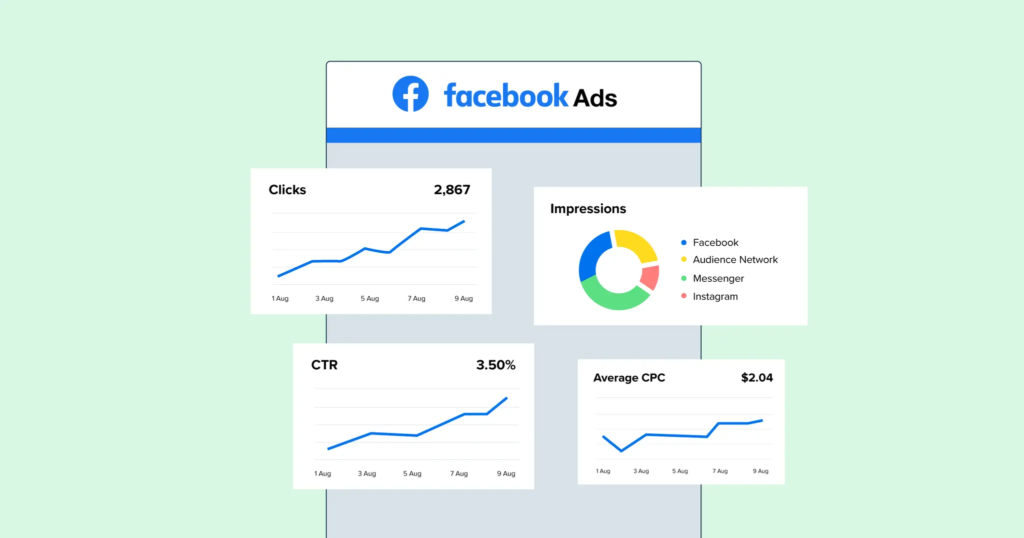
Facebook advertising operates within a dynamic landscape characterized by ever-changing user behavior, market trends, and competition. As such, a successful advertising campaign is not a static entity but rather an agile creation that requires continuous attention. It’s akin to steering a ship through varying tides and currents, necessitating adjustments and course corrections.
At the heart of regular monitoring and analysis is the reliance on data-driven decision-making. Data is the compass that guides your advertising efforts, helping you discern what works, what doesn’t, and where improvements can be made. The key metrics you should be tracking include click-through rates, conversion rates, cost per click, return on ad spend, and overall ad spend.
Adjusting Your Budget
Budget allocation is a fundamental component of Facebook advertising. Regular monitoring allows you to track your budget’s effectiveness in achieving your objectives. If certain campaigns are performing exceptionally well, it might be advantageous to allocate additional funds to capitalize on their success. Conversely, if some campaigns are underperforming, reallocating budget resources may be necessary to optimize results.
Fine-Tuning Targeting
Facebook’s advanced targeting options allow for precise ad delivery, but audience preferences can shift over time. Regular monitoring lets you observe how different audience segments respond to your ads. If certain demographics or interests exhibit higher engagement, you can refine your targeting to focus on those segments. Furthermore, you can explore lookalike audiences, which mirror the characteristics of your most engaged users, for increased efficiency.
Optimizing Creatives
Ad creatives play a pivotal role in engaging your audience. Regularly assessing the performance of your ad creatives enables you to identify what resonates most with your target audience. If certain ad formats, images, or copy prove more effective, you can replicate these successful elements across other campaigns for greater impact.
A Competitive Advantage
Regular monitoring and analysis provide a distinct advantage in Facebook advertising:
Adaptability: You can swiftly adapt to changes in user behavior, market trends, and competition by making informed adjustments to your campaigns.
Efficiency: Regular monitoring optimizes your ad spend, ensuring that your budget is allocated efficiently for the best results.
Continuous Improvement: By consistently analyzing data and making improvements, you can elevate the performance of your campaigns over time.
Proactive Decision-Making: Rather than reacting to issues as they arise, you can proactively address potential challenges and seize opportunities.
Long-Term Success: Regular monitoring and analysis are the cornerstones of achieving and sustaining long-term success in Facebook advertising.
Conclusion
For D2C brands aiming to generate six figures in revenue through Facebook advertising, it’s essential to implement a comprehensive strategy. From precise campaign setup to targeted ad sets, effective sales funnels, and a deep understanding of customer LTV, each component plays a vital role. Engaging ad creatives and video content, along with ongoing split testing and analysis, are the keys to optimizing your campaigns. By incorporating these ten strategies, your D2C brand can unlock the potential for substantial growth and success in the world of Facebook advertising.


